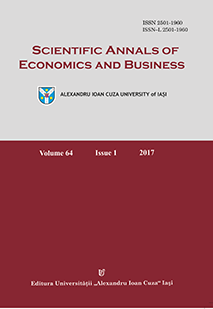The effect of credit risk and capital adequacy on the profitability of rural banks in the Philippines
The effect of credit risk and capital adequacy on the profitability of rural banks in the Philippines
Author(s): Rufo Mendoza, John Paolo R. RiveraSubject(s): Business Economy / Management, Economic development
Published by: Editura Universităţii »Alexandru Ioan Cuza« din Iaşi
Keywords: credit risk; capital adequacy; profitability; return on assets; return on equity;
Summary/Abstract: This paper examines the credit risk and capital adequacy of the 567 rural banks in the Philippines to investigate how both variables affect bank profitability. Using the Arellano-Bond estimator, we found out that credit risk has a negative and statistically significant relationship with profitability. However, empirical analysis showed that capital adequacy has no significant impact on the profitability of rural banks in the Philippines. It is therefore necessary for the rural banks to examine more deeply if capital infusion would result in higher profitability than increasing debts. The study also implies that it is imperative for the banks to understand which risk factors have greater impact on their financial performance and use better risk-adjusted performance measurement to support their strategies. Rural banks should establish credit risk management that defines the process from initiation to approval of loans, taking into consideration the sound credit risk management practices issued by regulatory bodies. Moreover, rural banks need to enhance internal control measures to ensure the strict implementation of internal processes on lending operations.
Journal: Scientific Annals of Economics and Business
- Issue Year: 64/2017
- Issue No: 1
- Page Range: 83-96
- Page Count: 14
- Language: English

